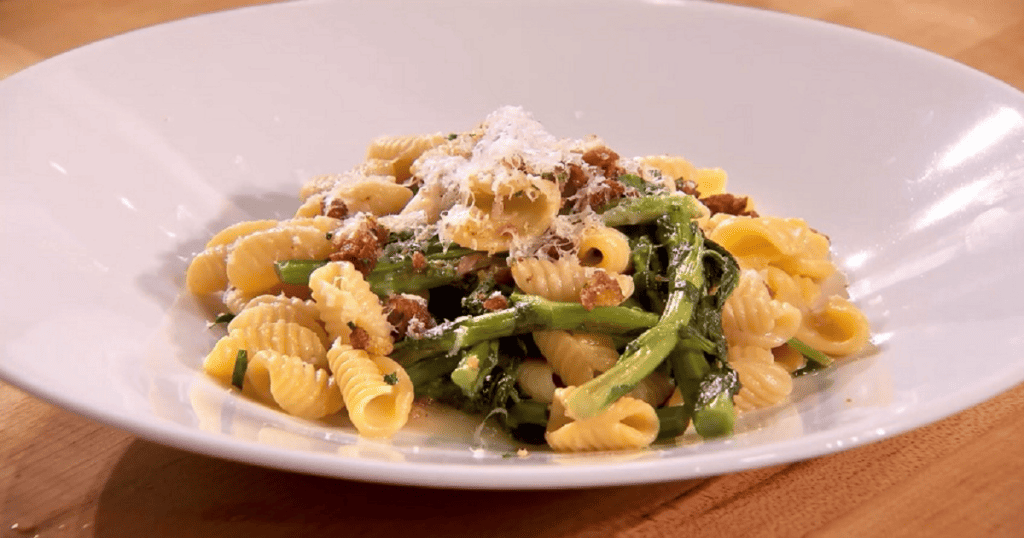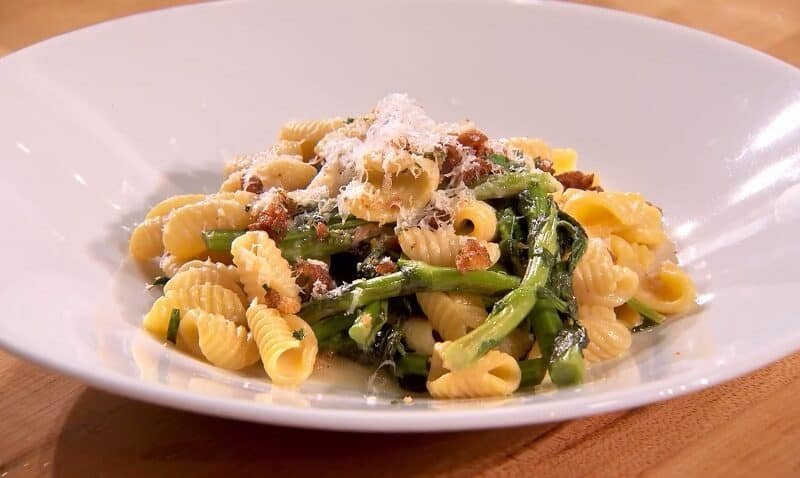The rustic charm of Italian cuisine as we present Gordon Ramsay’s treasured recipe for Homemade Orecchiette Pasta. Prepare for a delightful kitchen escapade, where you’ll handcraft this classic Pugliese pasta and pair it with the robust flavors of a simple yet delicious sauce.
Imagine your kitchen filled with the aroma of fresh dough as you master the art of crafting these charming ‘little ears,’ all with the guidance of Ramsay’s expertise. Get set for a hands-on adventure that promises to elevate your home cooking to new, delicious heights!
Does orecchiette pasta have eggs in it?
Traditional orecchiette pasta, which hails from the Puglia region of Italy, does not contain eggs. It is typically made with just durum wheat semolina flour and water. However, some variations of homemade or artisanal orecchiette might include eggs, so it’s always a good idea to check the ingredient list if you’re purchasing it or the recipe if you’re making it at home.
What kind of pasta is orecchiette?
Orecchiette is a variety of pasta common in Southern Italy, particularly in the Puglia region. The name “orecchiette” means “little ears” in Italian, which describes the shape of the pasta. It is a small, concave pasta that resembles a small ear or disk with a slight ridge around the edge. Orecchiette is often served with thick, chunky sauces or vegetable-based condiments that fit well into its cup-like shape.
What can I use instead of dried orecchiette?
If you don’t have dried orecchiette on hand, you can substitute it with other types of pasta with a similar size and shape to hold onto sauces. Good alternatives include:
- Conchiglie (shells)
- Cavatelli
- Farfalle (bow tie)
- Fusilli
- Gnocchetti Sardi (also known as malloreddus)
These pasta shapes can work well with the sauces and ingredients typically paired with orecchiette.
How do you shape orecchiette?
To shape orecchiette by hand, follow these steps:
- Begin by rolling out a small piece of pasta dough into a snake-like shape, about 1/4 inch in diameter.
- Cut this roll into small pieces, each about 1/4 inch long.
- Using the tip of a small knife or a pastry scraper, press down on each piece of dough and drag it across the work surface; the dough will curl around the knife, creating a concave shape.
- Turn the curled dough inside out over the tip of your thumb or index finger to form the characteristic “little ear” shape with a thicker edge on one side and a thinner, slightly frayed rim on the other.
- Place the shaped orecchiette on a floured surface to prevent sticking and continue with the rest of the dough.
Shaping orecchiette takes some practice, but it’s fun and satisfying once you get the hang of it. As plates are cleared and contented sighs circle the table, you realize that Gordon Ramsay’s Homemade Orecchiette Pasta is not just a dish. It’s a culinary escapade that awakens your home with laughter, togetherness, and the taste of Italy.
Whether it’s the joy of pressing dough into petite orecchiette or the triumph of tossing them in a luscious sauce, may your kitchen always be where memories are made, traditions are honored, and the simple act of cooking brings you closer to the ones you love. Until next time, buon appetito, and here’s to the many more homemade masterpieces waiting just beyond the flour-dusted countertop!
Last Updated on January 20, 2024 by John Siracusa




